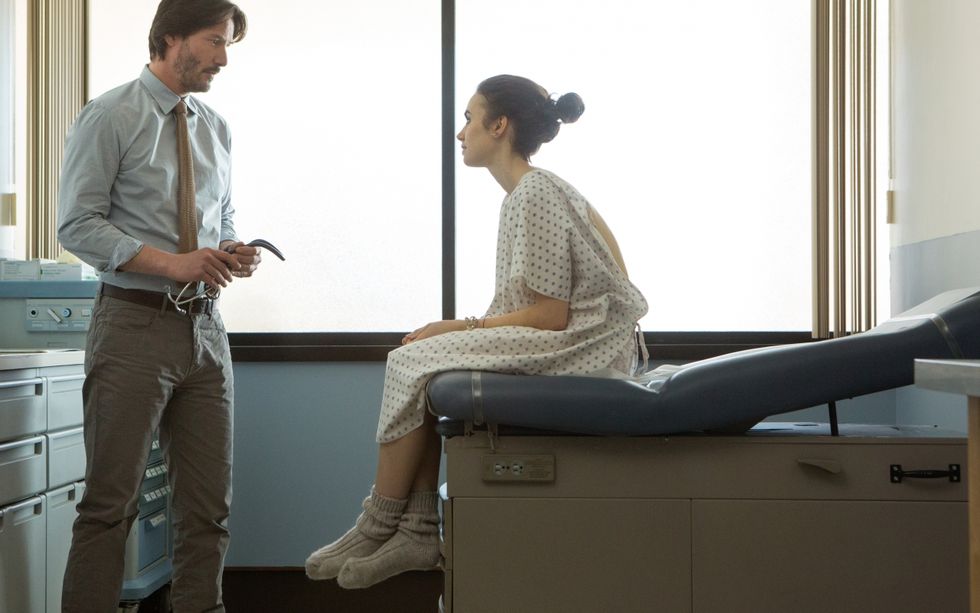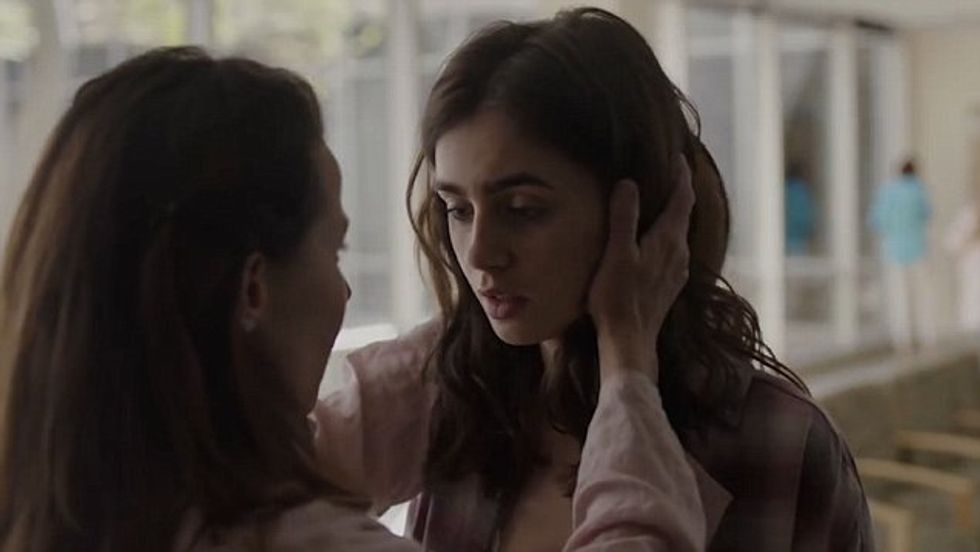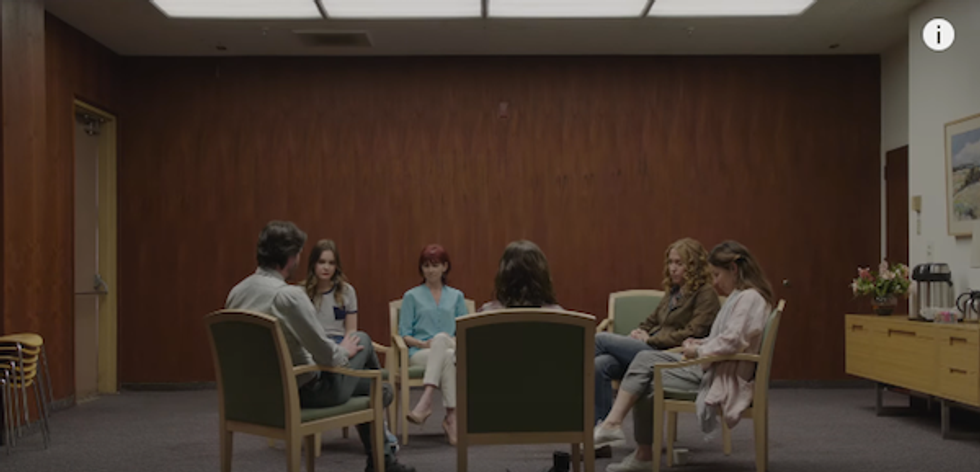Last Friday, Netflix released its newest original film "To The Bone." The film stars Lily Collins as Ellen, a young woman dealing with anorexia forced to enter an inpatient treatment center. Written and directed by former
While clearly competent and made with genuine love from first-hand accounts, "To The Bone" does rise far above the inherently exploitative nature of entertainment like this, but the images, phrases, and concepts prominently featured still have the potential to do some serious damage to those not careful.
While there is a lot to like here, there is also quite a bit that needs to be shielded, put into context, or simply done differently. The following article is dedicated to exposing the goods and the bads found in Netflix's newest chapter in this "Mental Health Cinematic Universe."
Writer/director Marti Noxon has structured Ellen's story with a layer of personal pain only first-hand accounts could assemble. Main actress Lily Collins brings her own experiences with eating disorders to fully realize this character's inner turmoil.
Even side character Keanu Reeves brings his own connection to the story by crafting a casual doctor the likes of which he wished his own family dealing with eating disorders
Upon first impression, "To The Bone" seems to have a layer of authenticity that predecessors failed to realize. With sexual abuse being used solely as a plot twist in "The Perks of Being a Wallflower," and suicide romanticized as a solution in "13 Reasons
In fact, the dedication to presenting this world in an authentic light is so evident, it becomes sincerely annoying when the film occasionally stumbles into the realm of Hollywood drama.
Unlike the cynically, exploitative "13 Reasons Why," "To The Bone" is a film made by survivors, genuinely invested in shedding light on a mental illness rarely seen on film.
Whether or not "To The Bone" is made with those suffering in mind is up for debate--some might argue it's
The characters, while exposable and cliche, do not succumb to the trappings of character designs one might expect with a story like this. The range of mindsets found in "To The Bone" is wide and varied.
Some characters want help while others refuse to accept the problem even exists, laughing, crying, and living all the way. To some, this disorder defines them. Others tend to not even notice.
A large portion of the drama found in "To The Bone" doesn't even stem from the disorders, rather the inner
However, with every positive, a paramount negative lies waiting in the shadows, subtly invading the minds of impressionable audiences. As noble a
Great care was taken from the filmmakers to address these problems with as little controversy and discomfort as possible. In fact, the film's most devastating scene involving a late-night bathroom tragedy serves as the ultimate example of a sequence left more up to the imagination rather than explicitly showing graphic, potentially damaging images to the public.
However, not everything about this world has been hidden. The image of Ellen's emaciated body is frequently shown in great, uncomfortable detail, while more "small-scale" details such as calorie counting tend to make an appearance in most conversations.
Sure, these might not reach the irresponsible lows of say a Hannah Baker graphically slitting her wrists in the bathtub a la "13 Reasons
Throughout the film, viewers hear of Ellen's Tumblr, a platform she uses to project her own pictures, drawings, emotions and thoughts of dealing with anorexia to the world. With each additional post, her account grows in popularity, even becoming an inspiration to some aspiring to look like her.
With this subplot, "To The Bone" unknowingly invites a problematic irony--the desire to empathize falls dangerously close to unintentional inspiration. In Anna Leszkiewicz's article published on New Statesmen,
"Here, the script knows that telling stories from personal experience, even with good intentions, is not enough to prevent those stories from being dangerous when they reach other people. But as a cultural artifact, "To The Bone" operates in the same way as Ellen’s artworks.
In the eyes of those who made it, the film is truthful, personal and authentic. It’s relatable for those going through the same things, and, thanks to Netflix’s platform, it will doubtlessly be very, very popular. It’s also potentially aspirational and triggering--no matter how good the intentions of the people behind it."
The "thinspiration" on display here is aggressively apparent, and casting the gorgeous Lily Collins to portray the sickly looking Ellen has the potential to misguide someone who feels they aren't "beautiful like her."
But without question, the most indefensible example of inauthenticity stems from its Hollywood-ized third act. Ellen's reluctance in embracing treatment comes back to bite her in the film's climax in which a near-death experience takes its toll on herself as well as her family. Another brilliant article by the genius Mic writer Melissa A.
"Accuracy is admirable. But when we only ever show the most life-threatening examples on screen, we’re not being accurate to the reality of most eating disorders at all. This is a common mistake the genre makes: focusing on young women with anorexia who are gaunt and faint from malnutrition.
Much of the drama in an eating disorder film revolves around the protagonist’s proximity to death and her loved ones’ insistence she may not survive. "To the Bone" is no exception. Ellen grows thinner and grayer by the minute, and every time her mother sees her, her shock grows more desperate.
This is an unfortunate reality of the illness--it’s just not the only reality. Should accuracy in portraying this specific experience of anorexia even be the primary goal in the first place? What about sensitivity? Responsibility?"
"To The Bone" is a difficult film to address. It's competently made with a couple truly award-worthy performances from survivors practically begging to portray such personal issues to a public they feel needs to be shown. Unlike so many others like it, a layer of first-hand accounts brings about a sincerity rarely found in stories aimed with this purpose in mind.
However, it also features gratuitous elements that can potentially harm the most impressionable of audiences unaware of the tale in store--which isn't that too strange an assumption due to the easy accessibility of Netflix.
The widespread accessibility to films like this allows for more credulous viewers to be exposed to the damage on screen, causing unthinkable devastation. It happened with "13 Reasons
In the research conducted by Bodywhys: The Eating Disorders Association of Ireland, an intricate list of guidelines for approaching the subject of eating disorders in the media has been well documented and can be found here. In the sub-section titled "Working With Personal Stories," the following is highlighted as majorly significant,
"In asking any person to share their personal experience of such a sensitive issue, it is vital to be mindful of the possibility that the experience could be distressing for that individual."
It seems as if the makers of this type of content need to be reminded of that sensitivity every now and again.
A paradox occurs whenever a story like this comes to fruition--be too real in presentation and you can face criticism by triggering impressionable audiences, but be too fake and you can face criticism by exploiting sincere problems. This middle ground is so difficult to reach, one must wonder if stories like "To The Bone" should even be told in the first place. To spread passionate awareness is one thing, but to detail it in a possibly upsetting way is another.
Fortunately, "To The Bone" is elevated higher in quality and conceived in a more sensitive light than other films like it--the days of Hannah Baker's suicide seems like a distant nightmare in comparison--but it still suffers from the same sins of the works it's desperately trying to break free from.
To use a morbidly appropriate aphorism, the images found here are tough to swallow, and Ellen's journey is one of unflinching pain. To recommend this as essential viewing is one many might have problems with.
"To The Bone" is a far superior option than "13 Reasons Why" in Netflix's filmography, but we still have a long way to go before accepting this trend as "important."
That is if this is a trend we'd like to see take off in the first place...























